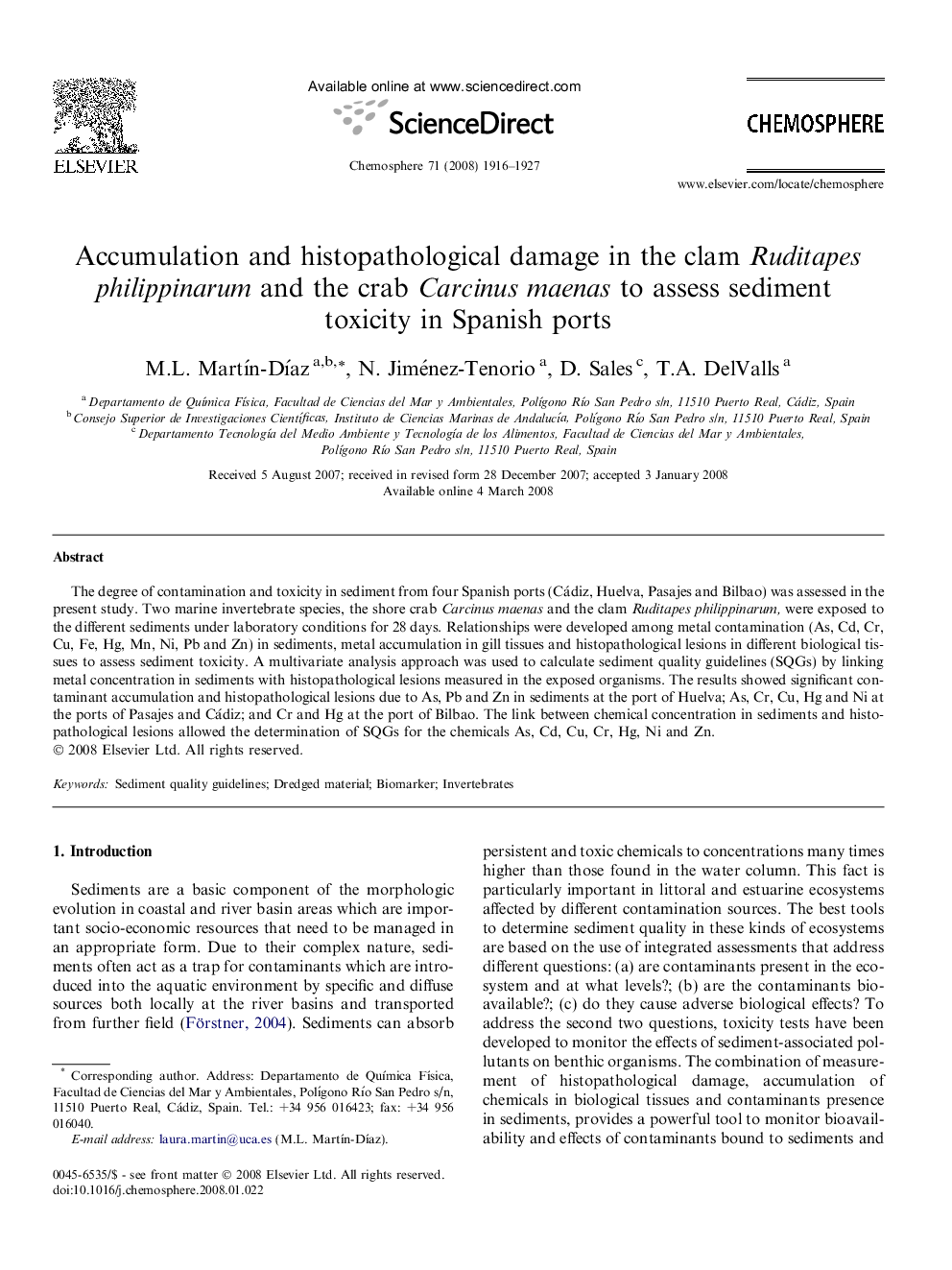| Article ID | Journal | Published Year | Pages | File Type |
|---|---|---|---|---|
| 4414295 | Chemosphere | 2008 | 12 Pages |
The degree of contamination and toxicity in sediment from four Spanish ports (Cádiz, Huelva, Pasajes and Bilbao) was assessed in the present study. Two marine invertebrate species, the shore crab Carcinus maenas and the clam Ruditapes philippinarum, were exposed to the different sediments under laboratory conditions for 28 days. Relationships were developed among metal contamination (As, Cd, Cr, Cu, Fe, Hg, Mn, Ni, Pb and Zn) in sediments, metal accumulation in gill tissues and histopathological lesions in different biological tissues to assess sediment toxicity. A multivariate analysis approach was used to calculate sediment quality guidelines (SQGs) by linking metal concentration in sediments with histopathological lesions measured in the exposed organisms. The results showed significant contaminant accumulation and histopathological lesions due to As, Pb and Zn in sediments at the port of Huelva; As, Cr, Cu, Hg and Ni at the ports of Pasajes and Cádiz; and Cr and Hg at the port of Bilbao. The link between chemical concentration in sediments and histopathological lesions allowed the determination of SQGs for the chemicals As, Cd, Cu, Cr, Hg, Ni and Zn.
